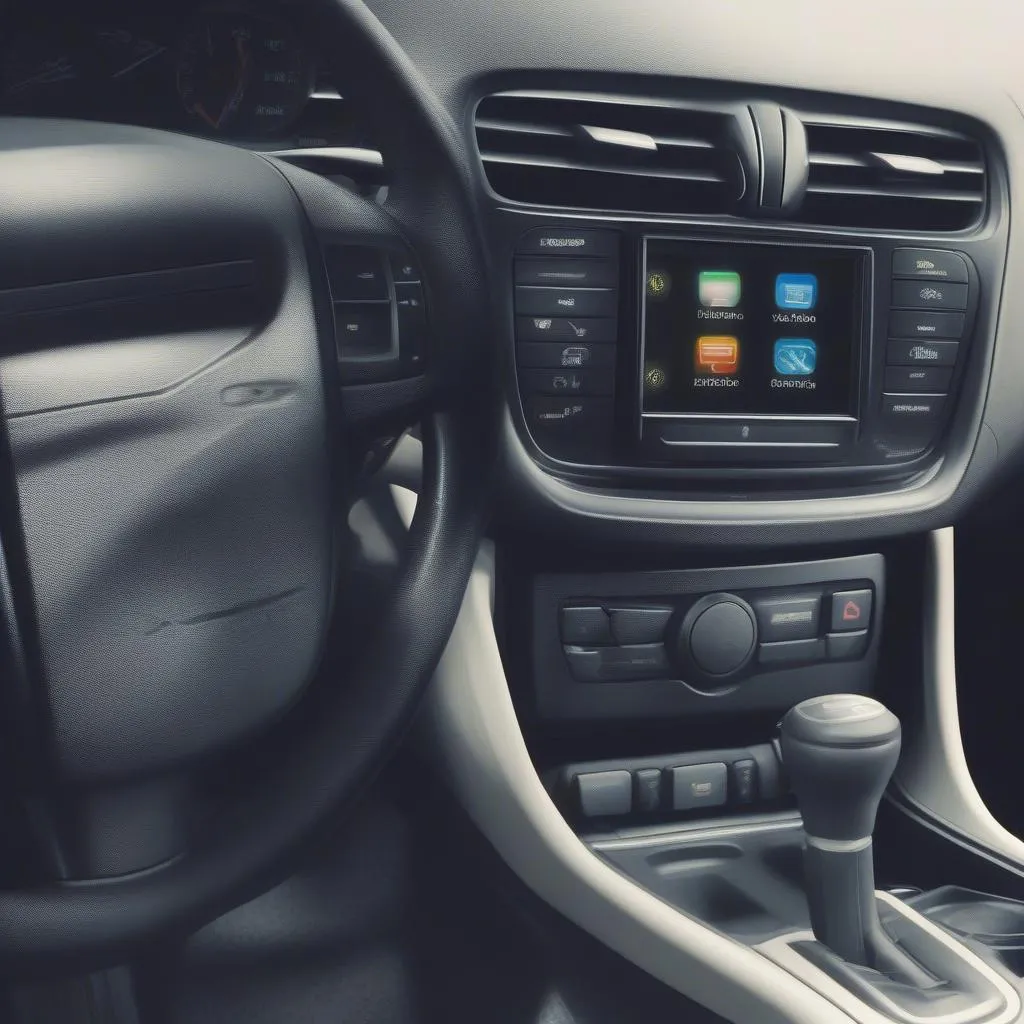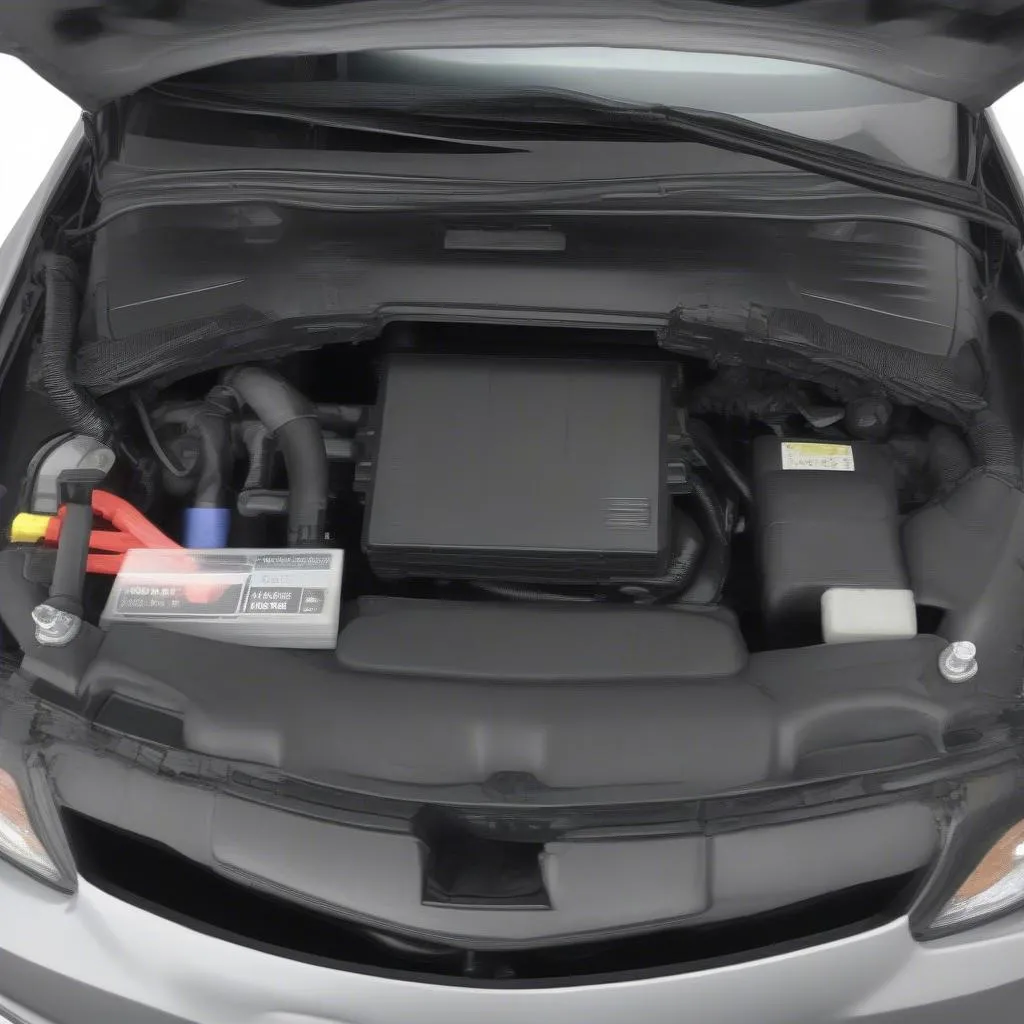Imagine this: you’re driving your trusty Chrysler Sebring down the highway when the engine light suddenly illuminates. Panic sets in, and you start wondering what could be wrong. You know you need to get to the bottom of this, but where do you begin? This is where understanding your car’s OBD (On-Board Diagnostics) system comes in handy.
Understanding the Chrysler Sebring Obd System
The OBD system is like your car’s built-in health monitor. It’s a crucial part of your Chrysler Sebring, designed to detect and report any issues with your car’s engine and other vital systems. For mechanics, it’s a powerful tool that helps diagnose problems quickly and efficiently, saving time and money. And for car owners, it’s a window into your car’s health, allowing you to potentially catch problems early and prevent them from escalating.
Why is the Chrysler Sebring Obd Important?
The OBD system is so important for several reasons:
- Diagnosing Engine Problems: The OBD system constantly monitors various engine parameters, such as fuel mixture, engine temperature, and oxygen sensor readings. When it detects a problem, it stores a diagnostic trouble code (DTC) which can be retrieved with an OBD scanner.
- Preventing Further Damage: By catching problems early, the OBD system can help prevent further damage to your engine.
- Reducing Emissions: The OBD system helps ensure your car meets emissions standards, making your car more environmentally friendly.
How to Use an OBD Scanner on a Chrysler Sebring
You can use an OBD scanner to access the diagnostic information stored in your Chrysler Sebring’s OBD system. There are several different types of OBD scanners available, ranging from simple code readers to more advanced diagnostic tools.
Here’s how to use an OBD scanner on your Chrysler Sebring:
- Find the OBD port: The OBD port is typically located under the dashboard, near the steering column. It’s a 16-pin connector shaped like a trapezoid.
- Connect the scanner: Plug the OBD scanner into the OBD port.
- Turn the key to the “ON” position: You don’t need to start the engine, just turn the key to the “ON” position.
- Read the codes: The scanner will display any DTCs stored in your car’s computer.
- Interpret the codes: You can use a DTC lookup website or a repair manual to interpret the code and understand what it means.
- Reset the codes: Once you’ve addressed the problem, you can reset the codes using the scanner.
Chrysler Sebring Obd Port Location
The OBD port location on your Chrysler Sebring may vary depending on the model year and trim level. However, it’s typically located under the dashboard, near the steering column.
 Chrysler Sebring Obd Port Location" width="1024" height="1024">Chrysler Sebring OBD Port Location
Chrysler Sebring Obd Port Location" width="1024" height="1024">Chrysler Sebring OBD Port Location
You can also use the following resources to help locate the OBD port on your Chrysler Sebring:
- Your owner’s manual: The owner’s manual for your Chrysler Sebring will likely have a diagram showing the location of the OBD port.
- Online resources: There are several online resources that can help you locate the OBD port on your car, including forums, repair manuals, and even videos.
Chrysler Sebring Obd Fuse Location
If you’re having trouble getting your OBD scanner to connect, it’s possible that the fuse for the OBD system has blown. To check the OBD fuse, you’ll need to consult your owner’s manual. It will provide a diagram of the fuse box and identify the fuse that’s responsible for the OBD system.
 Chrysler Sebring OBD Fuse Location
Chrysler Sebring OBD Fuse Location
Does My Chrysler Sebring Have OBD II?
Yes, all Chrysler Sebring models manufactured after 1996 have OBD II.
Chrysler Sebring Obd Frequently Asked Questions
Q: What are some common OBD codes on a Chrysler Sebring?
A: Some common OBD codes that may appear on a Chrysler Sebring include:
- P0171: System too lean (Bank 1)
- P0174: System too lean (Bank 2)
- P0300: Random/multiple cylinder misfire detected
- P0420: Catalyst system efficiency below threshold (Bank 1)
- P0455: Evaporative Emission Control System Leak Detected
Q: Can I fix OBD problems myself?
A: Some OBD problems can be fixed by a do-it-yourself mechanic, but others may require professional attention. If you’re not comfortable working on your car, it’s always best to take it to a qualified mechanic.
Q: How often should I scan my Chrysler Sebring’s OBD system?
A: While it’s not necessary to scan your OBD system every time you drive, it’s a good practice to do so at least once a month, especially if you’re noticing any unusual performance issues.
Get Professional Help with Your Chrysler Sebring’s OBD System
Need help with your Chrysler Sebring’s OBD system? We’ve got you covered! Our team of experienced technicians can diagnose and fix any OBD issues you’re facing. Contact us today for a free consultation!
Whatsapp: +84767531508